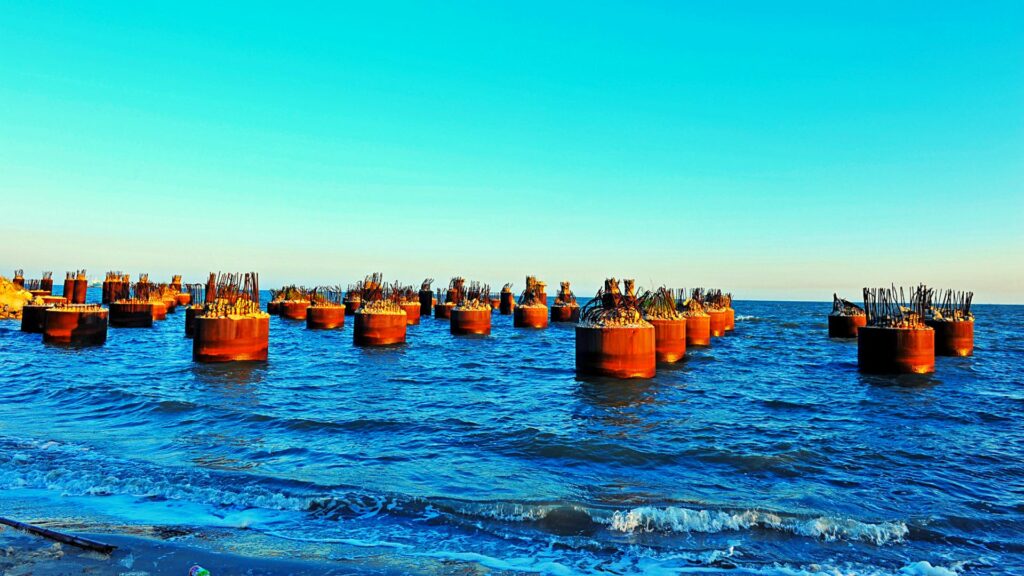When constructing any large building, it is impossible to use a single pile to support the structure’s weight. Piles must be used in groups to distribute and transfer the weight to the foundation. Therefore, pile caps are essential in construction because they transfer the loads from the superstructure to the substructure.
A group of 2-4 piles is typically required for simpler designs, but larger pile groups are required for more complex designs. Small pile groups of 2-4 piles are typically axially loaded. However, the design of pile caps gets more complicated in larger buildings as the pile caps are subjected to horizontal loads in addition to vertical loads.
Table of Contents
What is a pile cap?
A pile cap is a dense mat-like concrete structure that rests on the pile and enhances the stability of the foundation. It transfers the entire load of the superstructure to the piles underneath it, giving the entire foundation a high bearing capacity. Pile caps are similar to raft foundations due to their thick concrete structure.
Features of a pile cap
- A pile cap’s structural design emulates spread footing to create a resistance against the loads from the superstructure. This structural design prevents bending, which could cause the structure to collapse.
- A pile cap should have a span to thickness ratio of 5 or less to make it stable enough to distribute the loads from the superstructure to the piles underneath.
- Pile caps should be at least 500mm thick. However, the free edges can be at least 300mm thick.
- A pile cap should have a clear overhang of 150 mm, but anything above 100mm is acceptable.
- The leveling course of thick concrete under the pile cap should be at least 75 mm in thickness.
- The piles underneath a pile cap should be driven at least 50mm deep into the pile cap.
- A pile cap must be deep enough to allow for an overlap of reinforcements from the piles underneath and the columns above.
- The clear cover to the main reinforcement must be at least 40 mm thick.

How to construct a pile cap
The mat-like pile cap is made through a process called reinforcing or shuttering, in which concrete is supported by a framework so that it does not sag or fracture. The framework is made of long steel bars held in place using thin tie wires.
To construct a pile cap, determine where the columns and walls will be located and where the loads will be assigned. A 3D analysis model is best for determining column and wall load assignment, but you can also do it manually. Next, determine the number and type of pile caps to use, then model the pile caps.
Lay the steel framework for the pile cap and construct a timber perimeter around it. Stirring removes air pockets and prevents potential weakening. Allow the concrete to set.
The setting process involves chemical changes that might produce a lot of heat, so you may need to use refrigerant coolant to prevent cracking.
Summary
Pile caps are essential in construction because they keep structures stable and prevent them from collapsing. A pile cap is constructed primarily using a steel framework and a wet concrete mixture. When constructing a pile cap, it is crucial to stir the concrete mixture well to remove any air pockets that may cause the pile cap to be weak.

